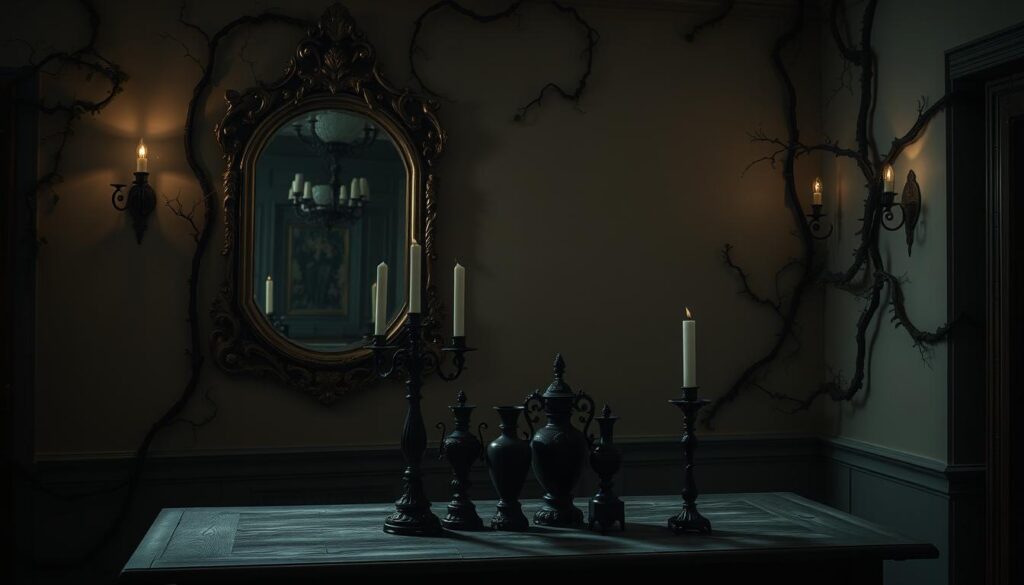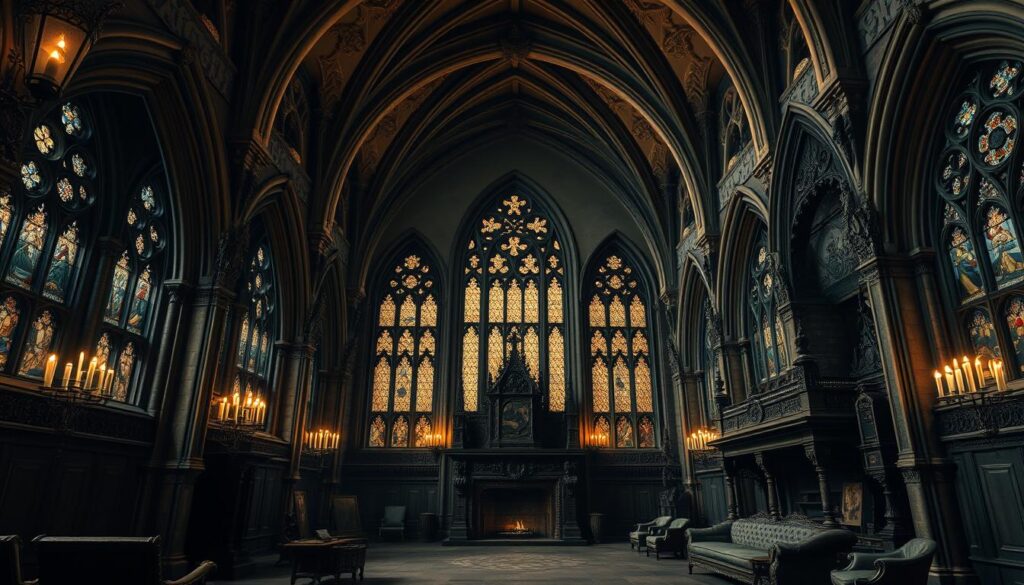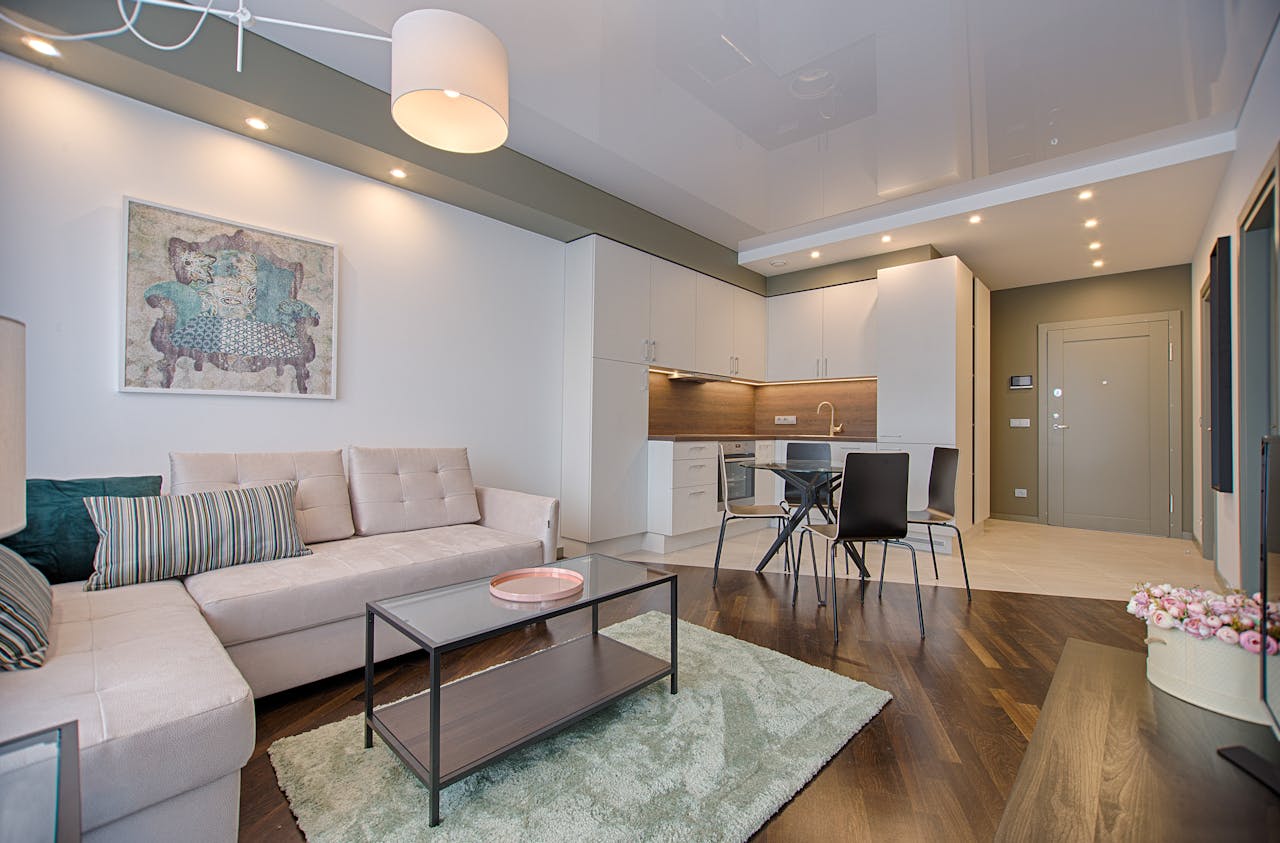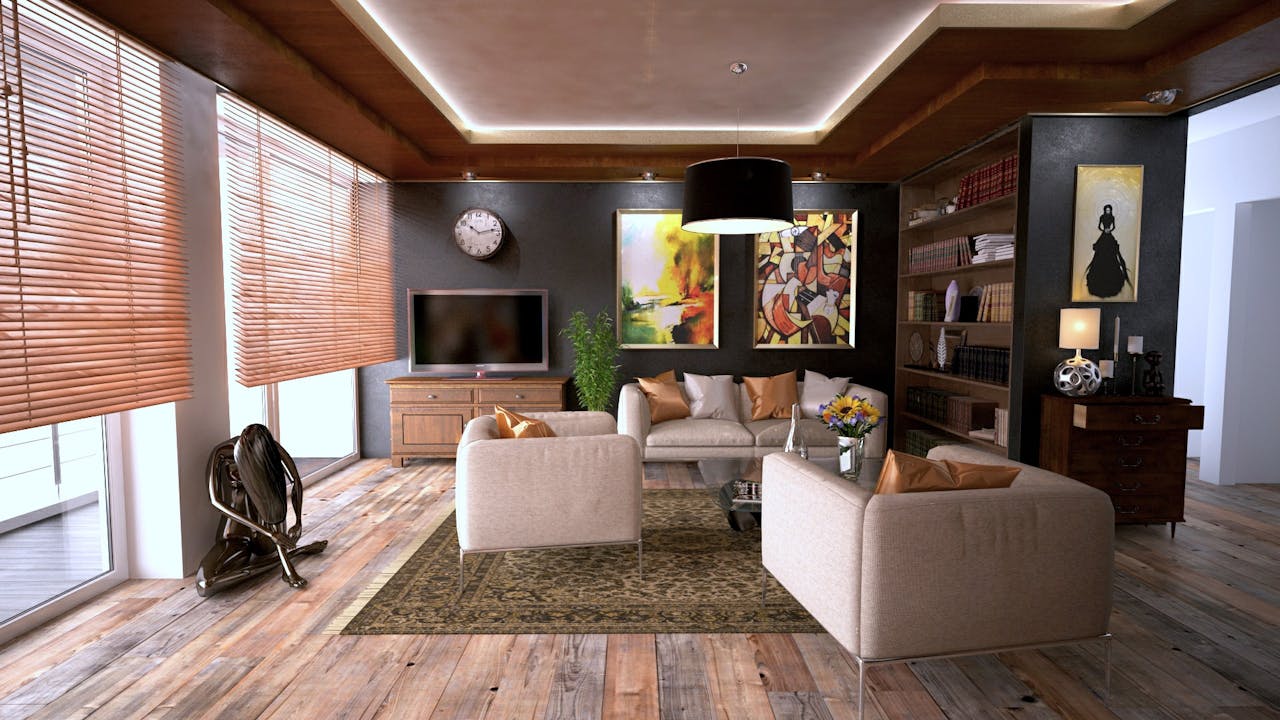Gothic architecture is known for its grand features like pointed arches and ribbed vaults. It also includes flying buttresses. This style adds elegance and mystery to any room, making it both moody and welcoming.
Embracing the essence of Gothic design, we can make interiors that stand out. They are not just beautiful but also full of character. This style uses dramatic lighting, deep colors, and intricate details. It’s ideal for those who want to make their homes extraordinary.
Key Takeaways
- Understand the historical roots of Gothic interior style
- Learn how to incorporate dramatic lighting and rich colors
- Discover the importance of ornate details in Gothic design
- Explore how to balance elegance and mystery in your space
- Create a unique and inviting atmosphere with Gothic elements
Understanding the Essence of Gothic Design
The Gothic style started in 19th-century England. It mixes medieval elements with Romantic and literary themes. This mix creates a unique look that still shapes Gothic home decor today.
Historical Context of Gothic Design
Gothic design comes from medieval architecture. It uses pointed arches, ribbed vaults, and detailed decorations. The Victorian Gothic style emerged in the 19th century as part of the Gothic Revival.
This period saw a renewed interest in medieval styles. It also took in Romanticism and modern literature.
The history of Gothic design is key to understanding its growth. It shows architectural innovation and a response to cultural and artistic trends. Important influences include:
- The use of light and shadow for dramatic effects
- Intricate stone carvings and stained glass
- Focus on verticality and height
Key Characteristics of Gothic Aesthetics
Gothic aesthetics stand out with arches, vaults, and detailed decorations. These features create a dramatic and mysterious feel. Key features include:
- Pointed arches and ribbed vaults for height and grandeur
- Intricate stone carvings and ornate details for richness
- Stained glass windows for color and filtered light
Knowing these traits helps us see the beauty of Gothic design. It shows why it’s still loved in home decor.
Color Palette in Gothic Interiors
In gothic design, colors are key to creating a sense of luxury and mystery. The gothic color scheme uses deep, rich colors. These colors add drama and luxury to the space.
Dark and Rich Colors
The gothic aesthetic is all about dark, luxurious colors. Think burgundy, emerald green, midnight blue, and black. These colors are striking and add mystery and elegance to gothic interiors.
To use these colors in your home, paint walls, furniture, and accents with them. For example, a single wall in a deep color can be a room focal point. Dark furniture adds depth and character.
| Color | Usage in Gothic Interiors | Effect |
|---|---|---|
| Burgundy | Accent walls, upholstery | Adds warmth and luxury |
| Emerald Green | Decorative accents, furniture | Creates a sense of opulence |
| Midnight Blue | Walls, bedding | Evokes a sense of mystery |
| Black | Furniture, trim | Adds drama and sophistication |
Accents and Contrast
Accents and contrast are vital in a gothic color scheme. Metallic accents like gold, silver, or copper add luxury and sophistication.
Contrast is also key for visual interest. Dark colors paired with lighter shades or metallic accents create a striking effect. For instance, gold or silver candelabras against dark walls are dramatic and luxurious.
By choosing a color palette with dark and rich colors, and using accents and contrast well, you can make a gothic interior both dramatic and elegant.
Furniture Selection for Gothic Interferences
To create a true Gothic atmosphere, picking the right furniture is key. It should reflect the style’s dark, mysterious vibe. The right pieces can turn a space into a dramatic, cozy spot.
Characteristics of Gothic Furniture
Gothic furniture stands out with dark woods and intricate carvings. These features add mystery and grandeur to the space.
- Dark wood finishes like ebony or mahogany
- Intricate carvings with Gothic themes
- Deep, rich colors in plush upholstery
Vintage and Antique Pieces
Vintage and antique furniture are perfect for Gothic interiors. They add authenticity, history, and character to the space.
When choosing vintage or antique items, look for:
- Ornate details and carvings
- Rich, dark finishes
- Luxurious fabrics in upholstery
Modern Gothic Furniture Options
For a modern twist on Gothic, consider modern Gothic furniture. It mixes traditional Gothic elements with modern looks. These pieces use modern materials and techniques.
Modern Gothic furniture often has:
- Clean lines with Gothic motifs
- Innovative materials like metal and glass
- Bold, dramatic designs
Choosing furniture that fits the Gothic style can create a cohesive, immersive space. It showcases the beauty and mystery of this unique design.
Lighting Choices in Gothic Design
Lighting is key in Gothic design, setting a mood that’s both sophisticated and haunting. We’ll look at how various lighting fixtures can boost the dramatic feel of a Gothic space.
Chandeliers and Candelabras
Chandeliers and candelabras are essential in Gothic lighting. They light up the space and act as decorative highlights. Ornate chandeliers with crystals or detailed metalwork add luxury. Candelabras with red candles create a warm, eerie light.
- Crystal chandeliers for a luxurious feel
- Candelabras with red or black candles for a dramatic effect
- Metalwork chandeliers with Gothic-inspired designs
Ambient and Task Lighting
It’s important to balance ambient and task lighting in Gothic design. Ambient lighting sets the mood, while task lighting highlights specific areas. We can mix floor lamps, table lamps, and string lights for a layered lighting effect.
- Use dimmable lights to adjust the ambiance
- Layer different light sources for a complex atmosphere
- Incorporate LED lights for energy efficiency
By picking and mixing different lighting elements, we can make a Gothic space that’s haunting and beautiful.
Textiles and Patterns in Gothic Decor
Textiles are key in Gothic design, making spaces moody and majestic. The fabrics and patterns chosen set the room’s mood and look.
Fabrics and Upholstery
Choosing fabrics is vital for a luxurious, moody feel in Gothic interior style. Velvet is a top pick for its softness and rich texture. It adds depth to any room. Silk, satin, and heavy cotton also create a lavish feel.
Upholstery in Gothic decor often has detailed designs that match the Gothic color scheme. This scheme includes dark, rich colors and metallic touches. These fabrics make furniture look great and add to the room’s feel.
Patterns that Enhance Gothic Themes
Patterns are crucial in Gothic design. You’ll see intricate florals, damask, and Gothic motifs like quatrefoils and trefoils. These patterns are used in upholstery, wallpaper, and more to create a unified Gothic space.
Dark, rich colors in these patterns add to the Gothic aesthetic. They make the space dramatic and mysterious. By picking the right patterns and fabrics, you can make a Gothic space that’s both unique and captivating.
By focusing on Gothic decor’s textiles and patterns, we can make a space full of mystery and luxury. Velvet drapes, patterned upholstery, and Gothic wall coverings can turn a room into a Gothic sanctuary.
Incorporating Artwork and Accessories
In Gothic interior design, artwork and accessories bring mystery and character. Items like candelabras and gargoyle sculptures are key. They help create a deep Gothic atmosphere.
Artistic Expressions
Gothic art spans many styles, from medieval to modern. Choosing artwork that reflects these styles can make a room feel truly Gothic.
Key Art Styles:
- Medieval religious art
- Modern Gothic interpretations
- Symbolist and mystic art
Look for artwork that feels mysterious and dramatic. Dark landscapes or Gothic portraits are great choices.

Decorative Elements and Accessories
Decorative items are essential for a Gothic look. Candelabras, ornate mirrors, and gargoyle sculptures enhance the aesthetic. They also tie the theme together.
| Accessory | Description | Gothic Element |
|---|---|---|
| Candelabras | Ornate candle holders | Dramatic lighting |
| Gargoyle Sculptures | Stone or metal sculptures | Mystical protection |
| Ornate Mirrors | Decorative mirrors with Gothic frames | Illusion and depth |
By carefully choosing these elements, you can make a Gothic space that’s both haunting and stunning.
Wall Treatments in Gothic Design
Creating a Gothic-inspired home starts with the wall treatment. The right choice can make your space feel like a medieval castle. It brings mystery and grandeur, just like Gothic architecture.
There are many ways to achieve this look. You can use wallpaper and texturing techniques, or go for dark paint colors and finishes.
Wallpaper and Texturing Techniques
Wallpaper can add depth and complexity. Choose designs that show Gothic motifs like intricate patterns and florals. Faux painting can make walls look aged, adding to the Gothic feel.
Venetian plaster is another great option. It creates a sense of history and authenticity. Your space will feel like a centuries-old castle.
Dark Paint Colors and Finishes
Dark paint colors are key in Gothic design. They create a somber and mysterious mood. Use navy blue, emerald green, and burgundy for a dramatic look.
The paint finish is also important. A matte finish adds to the somber mood. A glossy finish brings luxury and sophistication.
| Technique | Description | Effect |
|---|---|---|
| Faux Painting | A technique that mimics the appearance of aged surfaces | Creates a castle-like, aged appearance |
| Venetian Plaster | A method of applying multiple thin layers of plaster | Adds texture and depth, enhancing the Gothic ambiance |
| Dark Paint Colors | Rich, deep colors used on walls | Creates a somber, mysterious atmosphere |
By using these wall treatments, you can bring Gothic architecture into your home. Your dark home aesthetic will be dramatic and inviting.
Utilizing Architectural Features
To get a true Gothic interior style, using architectural details is crucial. Features like arches and vaults are key. They make a space feel dramatic and elegant.

Arches and Vaults
Arches and vaults are essential in Gothic home interior design. They bring visual interest and make rooms feel taller and grander. Arches can be doorways, windows, or room dividers.
Vaults add depth to ceilings, making rooms more complex. For more ideas, check out the Gothic interior design trend on Homes and Gardens.
Moldings for Gothic Appeal
Moldings also enhance the Gothic look. They add sophistication and elegance. Use them around doors, windows, and ceilings for a detailed look.
Choose moldings with intricate patterns and ornate details. These will make your space visually striking and true to Gothic style.
The Role of Nature in Gothic Interiors
Adding nature to Gothic home decor can make it even more enchanting. Gothic design often means dark and mysterious, but nature adds depth and complexity. This mix creates a unique and captivating look.
Using indoor plants is a great way to bring nature into a Gothic space. Plants with striking foliage or mysterious flowers can enhance the Gothic color scheme. They add to the room’s ambiance, making it feel more alive.
Indoor Plants and Gothic Styles
Choosing the right plants is key. Plants with dark leaves or unique shapes fit well in a Gothic room. For example, Alocasia or Colocasia plants with large leaves bring an exotic touch. Ferns and other foliage plants add lushness and energy.
| Plant Type | Gothic Appeal | Care Level |
|---|---|---|
| Ferns | High – adds lushness | Moderate |
| Dark-leafed Plants | High – fits dark color schemes | Low to Moderate |
| Exotic Blooms | High – adds mystery | Moderate to High |
Bringing the Outdoors In
There are more ways to add nature to a Gothic space. Using natural materials like wood, stone, or antlers can enhance the decor. It’s important to balance these elements with the Gothic design to avoid clutter.
For instance, a wooden crucifix or a stone statue can add mysticism. Adding branches or dried flowers also enhances the Gothic look.
By carefully adding natural elements, we can make a Gothic space feel both mysterious and grounded. This balance is essential for a space that’s both beautiful and functional.
Creating a Cozy Atmosphere
To make a Gothic interior truly immersive, balance drama with warmth. Gothic design is known for its dark, mysterious look. Yet, a good space should also feel relaxing and comfortable.
Layering Textures and Fabrics
Adding coziness to a Gothic room is easy with layered textures and fabrics. Mix plush velvet drapes with intricate lace. Or pair rough wooden furniture with soft throw blankets. This creates a space that’s both interesting to look at and fun to touch.
Popular fabrics for warmth and texture in Gothic spaces include:
- Velvet
- Lace
- Tapestries
- Faux fur
These elements help make a rich, layered look that’s both dramatic and cozy.
Comfortable Seating Arrangements
Comfortable seating is key for a cozy room, especially in Gothic interiors. Look for furniture that matches the Gothic style but also feels comfy. Think about adding oversized, plush armchairs or velvet sofas.
Key features in Gothic seating include:
- Ornate carvings or details
- Rich, dark upholstery
- Plush cushions and throw pillows
With these elements, you can make your Gothic home cozy and inviting. It will feel both dark and welcoming.
Tips for Achieving Balance in Gothic Design
Creating a Gothic-inspired home interior is all about balance. We need to mix dramatic elements with warmth. This balance comes from using gothic home accessories wisely and pairing them with modern pieces.
Dark Aesthetics and Spatial Harmony
Dark colors can feel overwhelming. To avoid this, we should balance them with lighter accents. Also, make sure the space is well-lit. Inspired by haunted house designs, we can use lighting to create a spooky yet welcoming atmosphere.
Blending Gothic and Modern Elements
Mixing Gothic and modern elements makes a space unique and inviting. By combining old Gothic architecture with new furniture, we add warmth. This makes the space feel cozy and less cold.



